Key takeaways:
- Adapting assessments is essential for fostering an inclusive environment and accurately measuring student understanding, rather than just their testing skills.
- Incorporating diverse formats and allowing student involvement in assessment design enhances engagement and empowers learners.
- Utilizing technology and providing accommodations, such as extra time and a distraction-free environment, significantly benefit dyslexic students and promote their confidence.
- Evaluating the effectiveness of adaptations requires assessing both academic outcomes and emotional growth, emphasizing the importance of student feedback in the adjustment process.
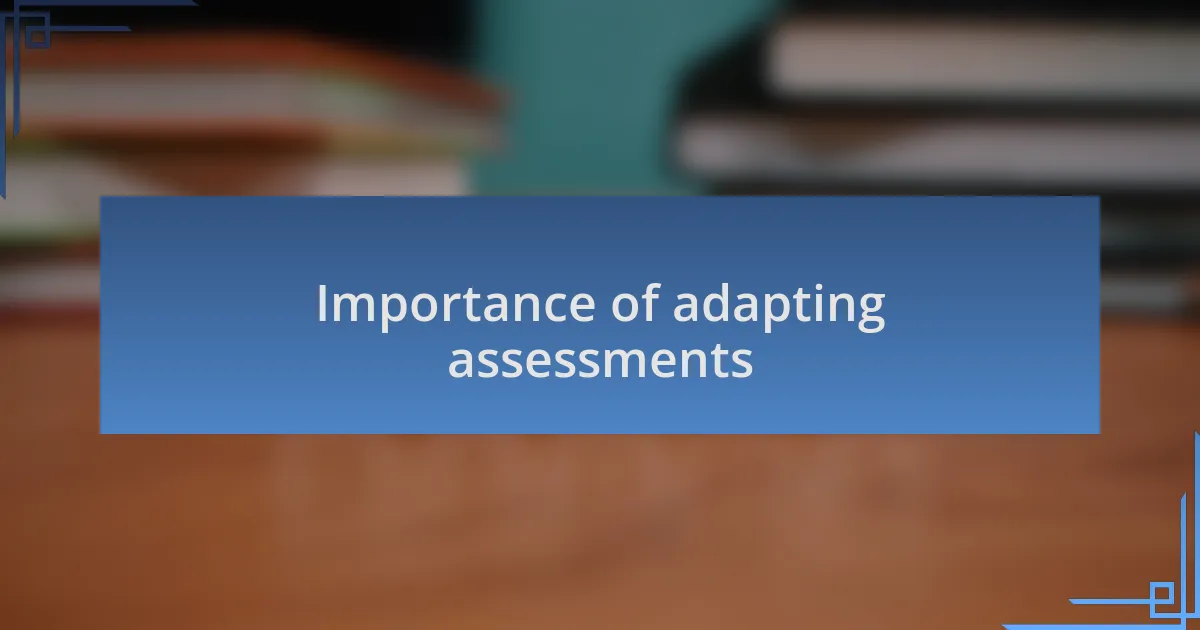
Importance of adapting assessments
Adapting assessments is crucial because every learner has unique strengths and challenges. From my experience as an educator, I’ve seen firsthand how a tailored approach can unlock potential. For instance, I once worked with a student who struggled with conventional testing formats. By providing oral assessments instead, I witnessed a remarkable boost in their confidence and performance.
It’s not just about fairness; adapting assessments fosters a more inclusive learning environment. Have you ever noticed how a small change, like allowing extra time or providing written instructions in simpler language, can significantly reduce anxiety for learners with dyslexia? I recall a time when I implemented these adjustments during a quiz, and the relief on my students’ faces was palpable. This simple act of consideration can pave the way for their academic success.
Furthermore, adapting assessments allows us to truly measure understanding rather than the ability to navigate a traditional testing format. I often reflect on how standardized tests can overlook the myriad of ways students can demonstrate knowledge. By embracing diverse assessment strategies, we not only honor individual learning styles but also gain deeper insights into each student’s comprehension. What we discover might surprise us!
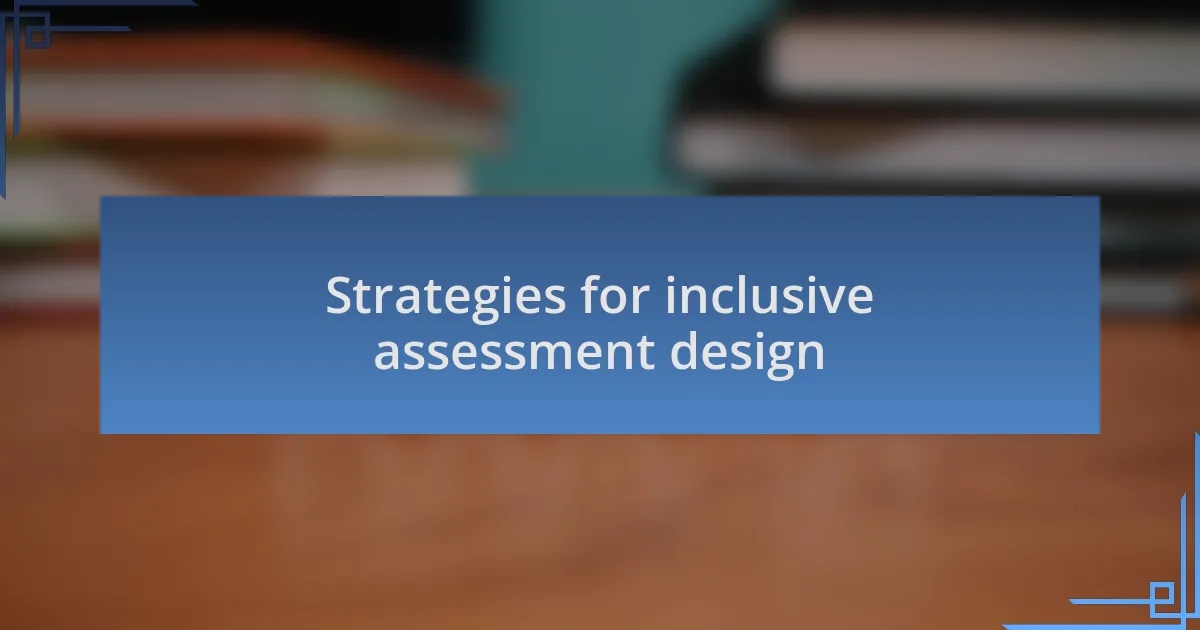
Strategies for inclusive assessment design
When designing inclusive assessments, one effective strategy is to incorporate multiple formats, such as visual aids or hands-on activities. I remember creating a project-based assessment where students could choose to present their knowledge through a poster, a model, or even a digital presentation. This flexibility allowed my dyslexic students to shine in ways that traditional tests might not have captured.
Additionally, embedding opportunities for self-reflection can empower learners and enhance engagement. Have you ever considered asking students what assessment methods work best for them? In my experience, fostering open dialogue about assessment preferences not only builds their confidence but also encourages ownership of their learning journey. When I tried this approach, I was amazed by how my students embraced the chance to express themselves.
Lastly, providing scaffolding during assessments can be a game changer. For example, I introduced checklists and prompts that broke down complex tasks into manageable steps. This small change helped students with dyslexia feel more in control and less overwhelmed. Reflecting on these moments, it’s evident that thoughtful adjustments can create an environment where all learners can thrive and demonstrate their true capabilities.
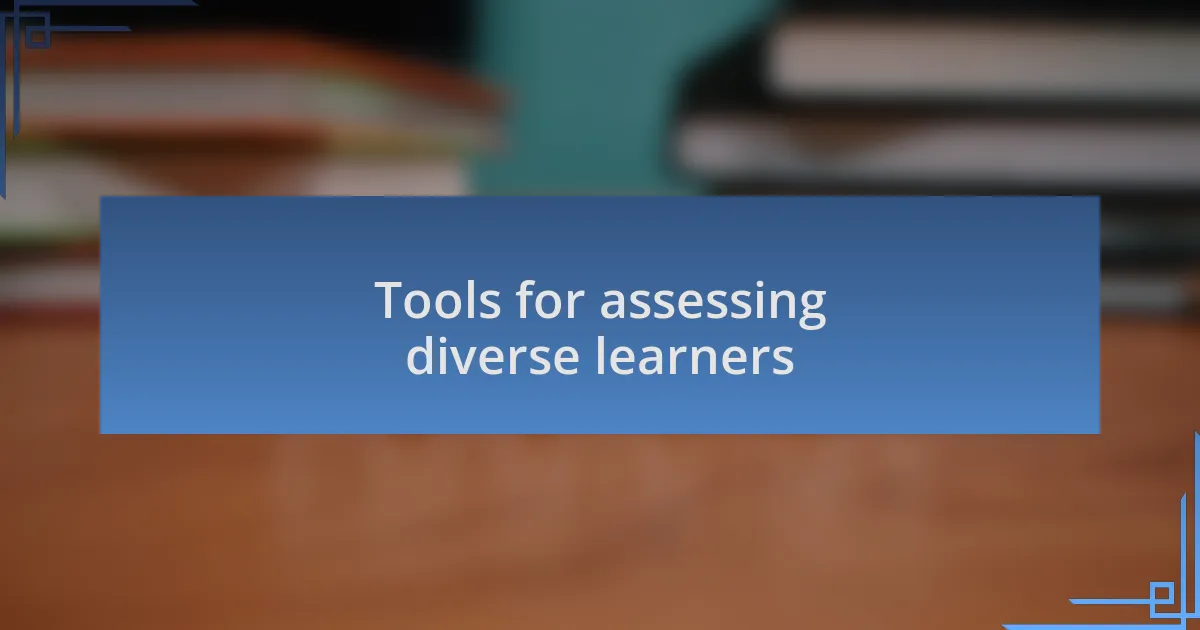
Tools for assessing diverse learners
When assessing diverse learners, technology can be a powerful ally. For instance, I once utilized software that converts text to speech, enabling my dyslexic students to engage with reading materials at their own pace. They often told me how much less anxious they felt using this tool, allowing them to focus on comprehension rather than struggling with decoding words. Isn’t it amazing how the right technology can transform a challenging experience into a more manageable one?
Another effective approach involves using formative assessments that provide ongoing feedback. In my classroom, I often employed quizzes that adapted based on student responses, helping to identify areas where they struggled without the pressure of a high-stakes exam. The relief on my students’ faces was palpable; they appreciated the opportunity to learn from their mistakes in a non-threatening way. Isn’t fostering a growth mindset crucial in helping learners feel secure and supported?
Moreover, visual assessment tools can cater to various learning styles. Once, I introduced graphic organizers to help students brainstorm and structure their ideas before writing. It was rewarding to witness how the visual layout made a significant difference in their thought processing. I still remember one student’s excitement when they shared their final project, confidently well-organized thanks to that simple visual aid. How could we harness such tools to empower every learner in our diverse classrooms?
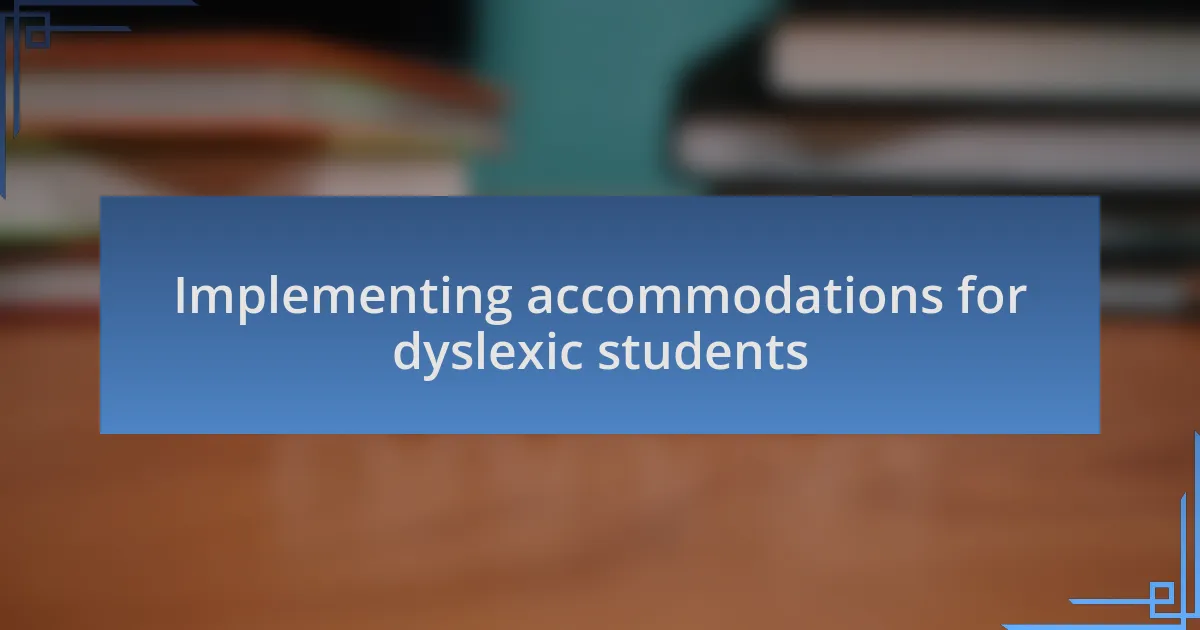
Implementing accommodations for dyslexic students
Accommodating dyslexic students often means providing them with tools that cater to their unique learning styles. For example, I once allowed a student to use a keyboard for written assignments instead of handwriting them. The transformation I saw was remarkable; their ideas flowed more freely without the physical barrier of writing, leading to a noticeable boost in confidence. Isn’t it incredible how a small change in approach can unlock a student’s potential?
Offering extra time on tests has also proven invaluable in my experience. I recall one exam where a student struggled with the time limit, resulting in anxiety that overshadowed their knowledge. After implementing extended time as an accommodation, that same student not only finished the exam but also expressed pride in their work. How often do we underestimate the impact of time on assessment performance, particularly for our dyslexic learners?
Additionally, providing a distraction-free environment during assessments can enhance focus and performance. I remember creating a quiet corner in my classroom specifically for tests, where one student who normally found it hard to concentrate thrived. They later shared how the calm atmosphere helped them organize their thoughts. How can we continually strive to create these supportive spaces to foster the success of each learner?
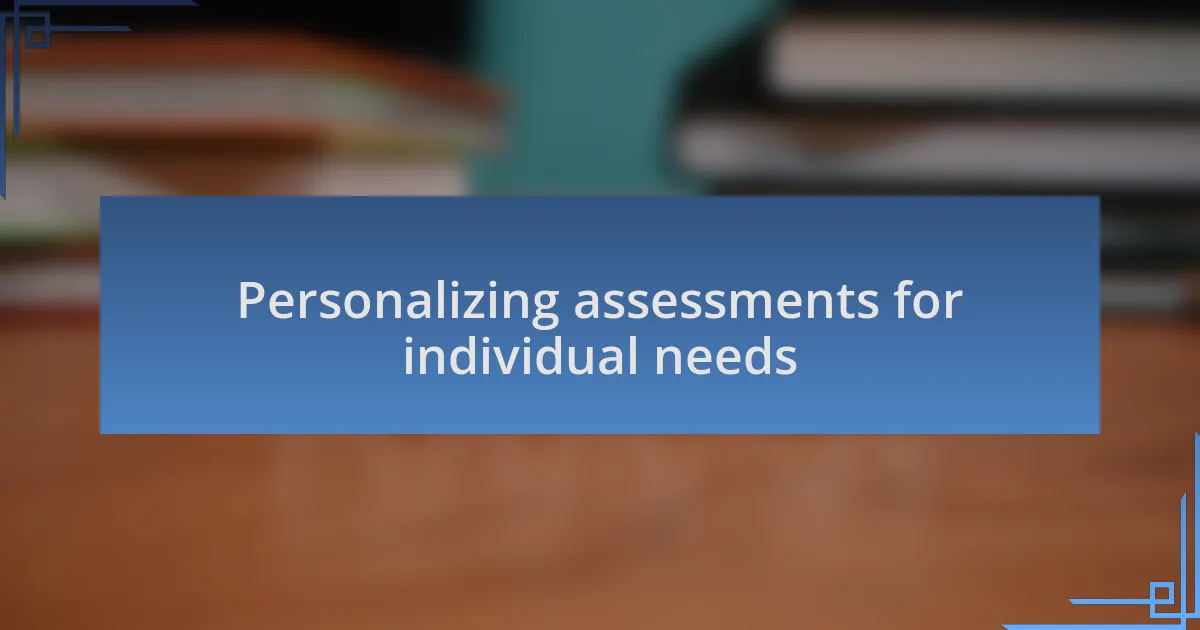
Personalizing assessments for individual needs
Personalizing assessments for individual needs requires a deep understanding of each student’s strengths and challenges. In one instance, I worked with a student who had trouble with traditional reading assessments, so I partnered with them to create a more interactive evaluation. By incorporating visual aids and oral responses, their engagement skyrocketed. Isn’t it fascinating how tailoring assessments can help draw out a student’s full potential?
Moreover, I’ve found that involving students in the assessment design process significantly empowers them. I remember asking a student to choose their preferred assessment format, whether it be a project or an oral presentation. Their eyes lit up with excitement, and the quality of their work was outstanding. Can we think of assessment as something more collaborative rather than just a test?
Finally, ongoing reflection and feedback play essential roles in personalizing assessments. I often check in with students about their experiences and iterate on assessments based on their input. This not only nurtures a sense of ownership but also fosters a safe space for learning. How often do we pause to listen to our students? This simple act can turn assessments into powerful learning experiences tailored for each learner.

Evaluating the effectiveness of adaptations
Evaluating the effectiveness of adaptations requires a keen eye on the outcomes. For example, after implementing a read-aloud option for a student who struggled with reading fluency, I noticed not just an improvement in their scores, but also a boost in their confidence. Isn’t it telling when the data reflects a change not just academically, but emotionally?
It’s crucial to gather feedback not only from assessments but also directly from the learners themselves. After trying out various adaptations, a student shared that they felt less anxious and more capable. This insight led me to question: how do we measure success? Is it merely through scores, or should we also celebrate increased confidence and enthusiasm for learning?
One powerful method I’ve found is tracking progress over time with each adaptation. For instance, a student improved significantly in their oral presentations after we made adjustments to the format. Monitoring their growth in both competence and comfort level reinforced the idea that effective adaptations can create lasting change. Wouldn’t it be great if we could all share those success stories?